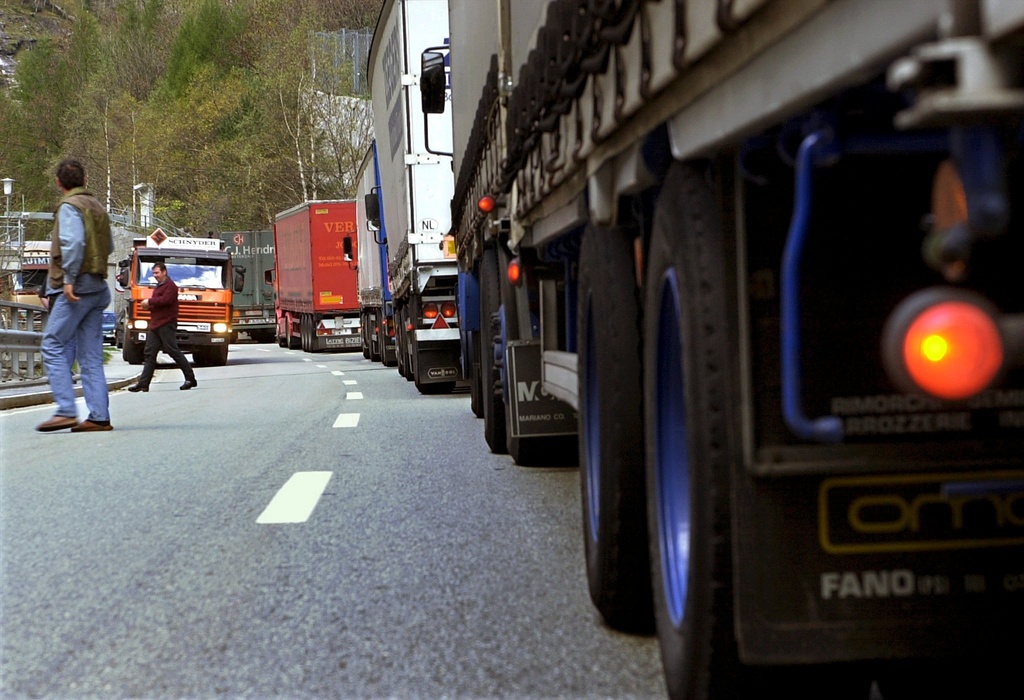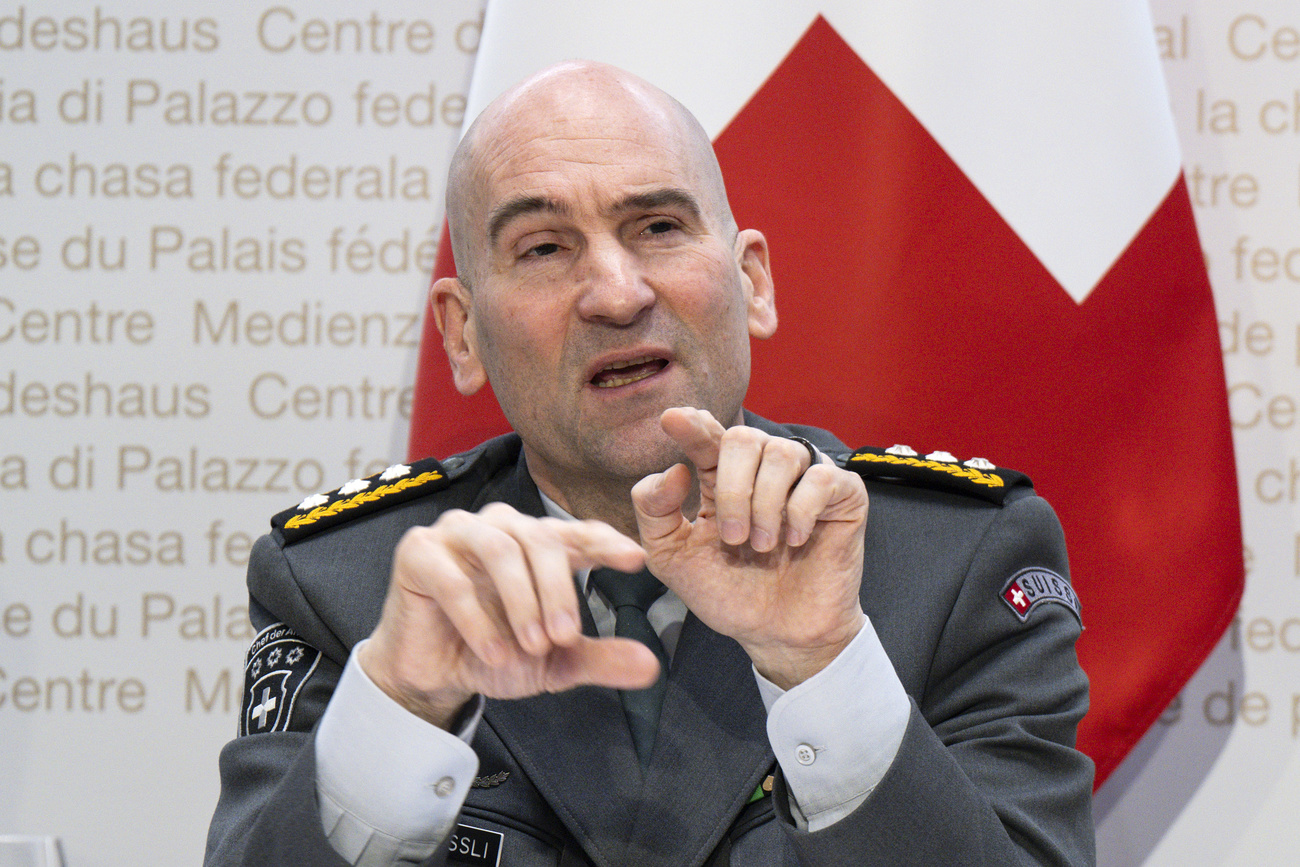Newspapers hail new Gotthard rail tunnel

The Swiss and foreign press have nothing but praise for Friday's breakthrough of the new Gotthard rail tunnel, which has set a record with its length of 57 kilometres.
In its Saturday edition, the Berner Zeitung of Bern sums up the achievement as a trump card in the hands of the Swiss when it comes to relations with the European Union.
“Since yesterday Switzerland is the world leader in the construction of tunnels. Nowhere else is there a longer tunnel.”
It notes that the three new tunnels at the Gotthard, Lötschberg and Ceneri will in the end cost a hefty SFr24 billion ($25 billion) but says Switzerland’s New Rail Link through the Alps project gives Bern leverage in its ties with Brussels.
This is the reasoning: “We’re building the NLRA… and what are you doing?”
Le Temps and other newspapers point out that European transport ministers were watching live from a meeting in Luxembourg and congratulated Switzerland.
Belgium, which currently holds the presidency of the EU paid tribute to the construction of the tunnel and described the Gotthard as a “look forward to the future by an entire country”.
The weekly business newspaper Handelszeitung said that Switzerland was once more in the spotlight and this time in a positive sense.
Solidarity
The Gotthard, it said, was proof that the country showed solidarity with the EU but Brussels hadn’t noticed.
It said that access lines from German and Italy were only “declarations of intent” and that the necessary finance for them had not been discussed in Brussels, Berlin or Rome.
The Neue Zürcher Zeitung said that it was not only politicians who celebrated when the tunnel was pierced at 2.17 pm on Friday but also the miners and the people of Sedrun, the village above the breakthrough. It was an “unforgettable” day.
There were many words of praise for the workers and emotive descriptions of the Austrian tunnel veteran who carried a wooden statue of St Barbara – patron saint of miners – from one side of the tunnel boring machine, affectionately called Sissi, to the other.
Sedrun was described by the usually conservative newspaper as the “centre of the world”.
The Aargauer Zeitung commented that the workers had taken Europe much farther than all the transport ministers.
Foreign press
The foreign press was also out in force to watch and comment on the breakthrough.
“At 57 km, the tunnel eclipses other links, such as the Channel tunnel between Britain and France or the new Lötschberg link under the Alps in western Switzerland, opened two years ago,” commented the Financial Times.
“Like the Lötschberg, the Gotthard tunnel, which has already been 17 years in the making and is not due to open for at least another six, will play a crucial role in accelerating rail travel between northern and southern Europe and form a key piece in a pattern of new high speed rail connections under the Alps.”
The Associated Press took a look at the environmental aspects of the new tunnel.
“Mindful that heavy goods traffic has contributed to the steady erosion harming fragile alpine plants and animals – as well as cherished scenery – Switzerland has been tunneling through the Alps for decades.
Gotthard beats Seikan
“The Gotthard Base Tunnel – first conceived in 1947 by engineer Eduard Gruner beats Japan’s Seikan Tunnel, which is 33.5 miles (53.9 km).”
Several comparisons were made about how much rock was excavated from the Gotthard project.
“The rock cut out from the mountain during tunnel construction, would be enough to build five pyramids of Cheops,” the Voice of Russia said.
Reuters news agency also picked out that theme: “About 13 million cubic metres of rock have been dug out of the mountain.”
It also quoted Swiss Transport Minister Moritz Leuenberger: “Together we risked a lot. Together we achieved a lot, because we know the mountain is large but we are small.”
The Gotthard Base Tunnel (ready 2016-17) and Ceneri Base Tunnel (ready 2019) create an ultramodern flat rail link whose highest point is at 550 metres above sea level. This is much lower than the highest point of the existing route through the mountains at 1,150 metres.
The route through Switzerland becomes flatter and 40km shorter, so faster for passengers. Freight trains travelling on the flat route can be longer and pull up to twice today‘s weight – 4,000 tonnes instead of 2,000 tonnes. They will be up to twice as fast.
These two tunnels, plus the Lötschberg base tunnel (opened 2007), are the key elements of the NRLA (New Rail Link through the Alps).
The NRLA is one of the world’s largest construction projects and includes the extension of two North-South railway lines through Switzerland.
1947: Carl Eduard Gruner, an engineer and urban planner from Basel, puts forward the idea of a base tunnel under the Gotthard.
1962: First project for a tunnel between Amsteg and Giornico.
1971: The government asks the Swiss Federal Railways to come up with a project to be presented in 1975.
1990: The government puts forward the “network variant” which foresees the construction of base tunnels at Lötschberg and the Gotthard.
1992: In a referendum, 63.6 per cent of Swiss voters approve the construction of the New Rail Link through the Alps (NRLA) with the two base tunnels.
1994: The Alps Initiative is accepted by 52 per cent in a referendum. This foresees moving freight from road to rail and the protection of the Alps is included in the Swiss constitution.
1998: The people and parliament approve the financing of the NRLA project. Swiss Federal Railways founds the contractor AlpTransit Gotthard Ltd.
1999: After preliminary work, excavation starts on both the Gotthard and Lötschberg tunnels.
2007: The Lötschberg tunnel opens (34.6km).
2010: The final breakthrough of the Gotthard Base Tunnel (57km).
2017: Expected opening date of Gotthard rail tunnel to traffic.

In compliance with the JTI standards
More: SWI swissinfo.ch certified by the Journalism Trust Initiative












You can find an overview of ongoing debates with our journalists here . Please join us!
If you want to start a conversation about a topic raised in this article or want to report factual errors, email us at english@swissinfo.ch.